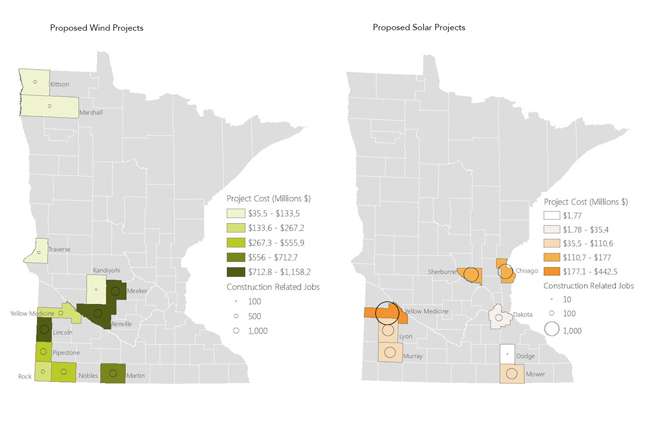Wind and solar energy projects could bring 5,000 new jobs to rural Minnesota

Minnesota has undergone a remarkable transformation in its energy landscape over the past decade. Coal, once the dominant fuel source for Minnesota's electric utilities, has given way to new types of energy resources—wind and solar among them. While Minnesota's state energy policies have been a large driver in the shift from fossil fuels to renewables, the federal Production Tax Credit and Investment Tax Credit have played a major role in shaping the state's clean energy economy while keeping rates affordable for utility customers, according to a new report from the University of Minnesota Energy Transition Lab. ETL is a strategic initiative of Institute on the Environment, supported by the Law School and the Office of the Vice President for Research.
The report "analyzes real proposed projects, not theoretical ones," says Ellen Anderson, ETL's executive director. "Extension of federal policies for wind and solar development are helping Minnesota residents, businesses and schools save on their energy bills and procure locally-produced wind and solar energy," says Anderson.
Among the report's highlights:
- The clean energy economy is continuing to expand in Minnesota, providing low-cost energy, creating jobs and economic impact.
- Federal and state policies, especially extension of the Investment Tax Credit and Production Tax Credit, are helping Minnesota see significant new renewable energy projects, jobs, ratepayer savings and economic benefits.
- Modeling shows that planned additions of wind and solar projects in the state will result in approximately $7.09 billion in direct investment, over 5,000 jobs related to construction alone and 3,987 megawatts of newly installed energy capacity.
- Distributed generation of solar energy has almost doubled in the past two years, with businesses citing the ITC as a major driver in their success.
"These projects will not only expand renewable energy in Minnesota, they will create more than 5,000 jobs and over $7 billion in direct economic impact in 18 mostly rural Minnesota counties," says Anderson.
Provided by University of Minnesota


















